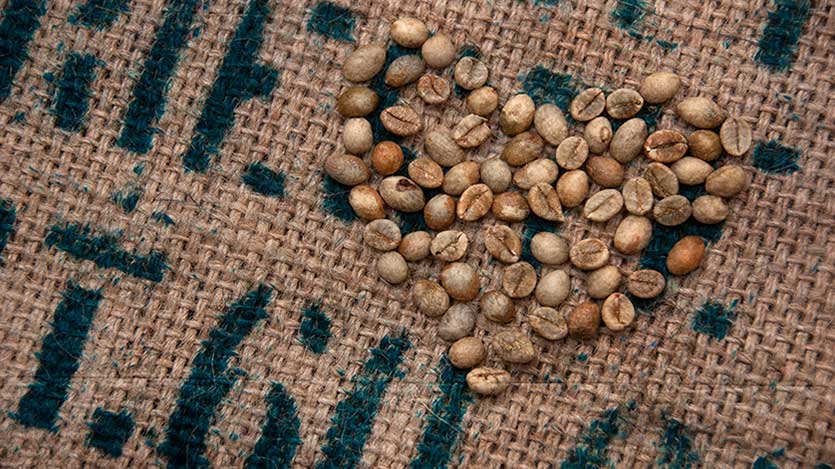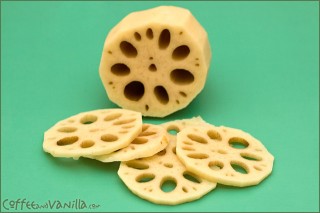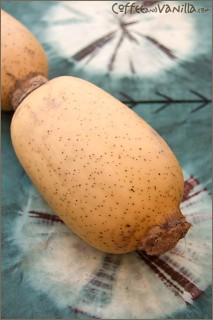Lotus (Nelumbo nucifera) is flowering water plant but except having decorative values, every part of this plant is used in cuisines of China, Japan and India.
The stamens of the pink lotus flowers infused with water make a fragrant tea (India), while the seeds, off-white and crisp-textured, are removed from flower pods, peeled of their downy skins and eaten raw, or dried and puffed like popcorn (India).
Fresh seeds, both mature and immature, can be eaten raw. Dried seeds, sometimes called ‘lotus nuts’ must be boiled until soft. Crystallised with sugar as part of Chinese New Year sweet offerings; cooked into a sweet soup; and made into sweetened lotus nut paste which is mostly sold in cans and used as a filling for Chinese moon cakes.
In Thailand, young tender leaves and petals are eaten with a savoury sauce. Dried mature leaves are softened first by soaking in boiling water, then drained and used to wrap sticky-rice parcels and other foods to be steamed. During the steaming process, they impart a delicate musty flavour.
Enfolding a chicken in lotus leaves, then encasing it in pond mud or clay before cooking it, is the famous Beggar’s Chicken which has now become an esteemed restaurant dish, with various refinements such as filling the cavity of the chicken with soaked dried mushrooms, soy and wine. Dried lotus leaves are easily obtainable in Chinese food stores.
Apart from those parts which can be seen, beneath the surface of the lakes and ponds in which they grow are edible rhizomes. This grey-brown lotus ‘root’ is the part most often eaten. With swellings along its length, it resembles links of sweet potatoes, growing in strings up to a metre long. Young specimens are peeled and eaten fresh in salads (Thailand). More mature roots are stir-fried, stuffed and deep fried or simmered in soup (China, Japan).
Chinese food features this starchy vegetable in savoury dishes where it not only adds bulk but also has the property of absorbing richness when cooked with fatty meats. Besides the subtle flavour and crunchy texture, in cross-section the root reveals a beautiful, lacy pattern.
If buying fresh rhizomes ensure there are no decayed spots or perforations.
Wash lotus root thoroughly, and remove the thin skin by scraping. Since the rhizome discolours easily when cut, treat it as you would apple or pear – as soon as it is peeled and sliced, drop it into water which has been acidulated with lemon juice or citric acid. Slice off and discard the points between sections. The air spaces which run through the cylindrical shape are a decorative bonus.
Information source: Asia Food.





I am fascinated by this plant. It’s so interesting looking!
Thank you for this fascinating and informative post. I have used dried lotus root before but not fresh lotus root. I love the pattern of the cross section – endlessly delightful.
I’m so envious that you can get fresh lotus root! We love turning into a sweet soy ‘banchan’ (Korean side dish) but have to use frozen or dried as there are none sold fresh here :(
I was very intrigued to read about lotus root I don’t think I’ve ever tried this before myself. Thank you for this enthralling and enlightening post :D
Rosie x
Nice post! I have been wanting to try lotus root for a while now. It looks so interesting.
I’ve heard a lot about these roots, but never found them. They seem rare where I live. Too bad !
I just bought a fresh lotus root this afternoon in Chintown, Oakland, California. I appreciate all the interesting lotus root recipes I’ve found on the Internet. I’ll have to figure out what would be fairly easy and would please my husband and myself.